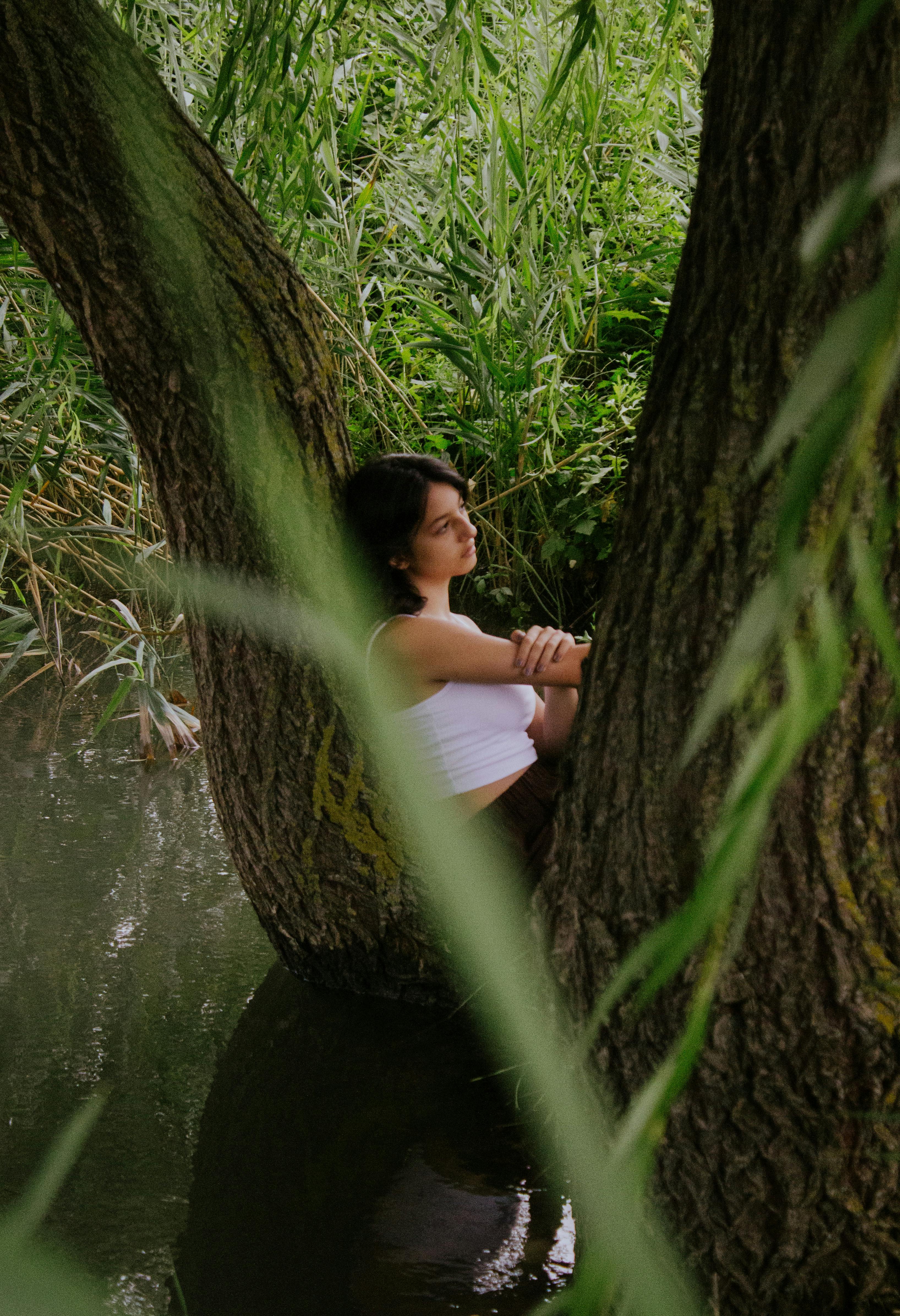Imagine walking into a beautiful art gallery, surrounded by stunning masterpieces from around the world. The colors, textures, and emotions of each piece come to life, captivating your senses. Now, picture experiencing all of this from the comfort of your own home. With the rise of virtual art gallery curation, art enthusiasts like you can immerse themselves in the captivating world of art, exploring and appreciating a wide range of artworks without ever leaving their living room. Whether you’re a seasoned art connoisseur or just beginning your artistic journey, virtual art gallery curation offers an innovative way to connect with the art world and discover new, awe-inspiring creations. Step into the digital realm, where art meets technology, and let your imagination run wild.

Understanding Virtual Art Gallery Curation
What is Virtual Art Gallery Curation?
Virtual art gallery curation is the process of selecting, organizing, and presenting artwork in a digital, online platform. Just like traditional art gallery curators, virtual art gallery curators are responsible for creating a visually captivating and engaging experience for visitors. However, instead of physical spaces, virtual art gallery curators curate exhibitions in virtual environments, utilizing technology to showcase artwork and engage with audiences.
The Role of the Virtual Art Gallery Curator
The virtual art gallery curator plays a crucial role in translating the traditional curatorial practice into the digital realm. They work closely with artists, collectors, and audiences, using their expertise to curate meaningful and impactful exhibitions. The curator’s responsibilities include selecting and acquiring artwork, creating a coherent thematic narrative, determining the exhibition layout, and implementing interactive features to enhance visitor engagement. Through their curation, virtual art gallery curators strive to provide an immersive and enriching art experience for online visitors.
Benefits of Virtual Art Gallery Curation
Accessibility and Reach
One of the most significant advantages of virtual art gallery curation is the ability to reach a wider audience. Unlike physical art galleries, which may be limited by geographical location and opening hours, virtual art galleries are accessible to anyone with an internet connection. This accessibility allows artists to showcase their work to a global audience, democratizing the art experience and giving equal opportunities for exposure to artists from diverse backgrounds and locations.
Flexibility and Adaptability
Virtual art gallery curation offers a level of flexibility and adaptability that is not possible in traditional art spaces. Curators can easily modify the exhibition layout, change the arrangement of artworks, or even create entirely new exhibitions without the constraints of physical space or logistics. This flexibility enables curators to experiment with different themes, curatorial approaches, and artwork combinations, pushing the boundaries of traditional curatorial practices.
Cost-Effectiveness
Hosting a physical art exhibition can be an expensive endeavor, requiring expenses such as venue rental, transportation, installation, and security. In contrast, virtual art gallery curation eliminates many of these costs. Without the need for a physical space or logistical arrangements, curators can create and showcase exhibitions at a significantly lower cost. This cost-effectiveness opens up new opportunities for emerging artists, independent curators, and art enthusiasts with limited resources, allowing them to participate in the curation process and expose their work to a wider audience.
Increased Engagement and Interaction
Virtual art gallery curation platforms offer various interactive features that enhance visitor engagement and interaction with the artwork. Through virtual guided tours, visitors can explore exhibitions at their own pace, gaining insights into the curator’s vision and the artist’s intention. Additionally, visitors can participate in live discussions, interact with multimedia content, and even experiment with augmented reality features to further immerse themselves in the art experience. These interactive elements foster a deeper connection between the audience, the curator, and the artwork, creating a more engaging and dynamic exhibition environment.

Virtual Art Gallery Curation Platforms
Overview of Available Platforms
There are several virtual art gallery curation platforms available, each offering unique features and functionalities. These platforms provide curators with the tools and infrastructure necessary to create and showcase virtual exhibitions. Some popular platforms include Artsteps, Kunstmatrix, and Curat10n. Each platform offers a wide range of customization options, allowing curators to tailor the virtual gallery space to their specific curatorial needs and preferences.
Key Features and Functionality
Virtual art gallery curation platforms typically offer a range of key features and functionalities that enhance the curation process. These include the ability to customize the exhibition space, upload and display various types of artworks (such as paintings, sculptures, and digital art), create interactive elements, and integrate multimedia content. Additionally, many platforms offer navigation tools, virtual guided tours, and visitor engagement features to ensure a seamless and immersive art experience.
Popular Virtual Art Gallery Platforms
Artsteps is a popular virtual art gallery platform known for its user-friendly interface and versatile customization options. The platform allows curators to create 3D virtual exhibitions, upload artworks, and implement interactive elements such as text panels and audio guides. Kunstmatrix is another widely used platform that offers advanced visualization options, allowing curators to create realistic gallery spaces. Curat10n is known for its multi-user functionality, enabling curators and artists to collaborate in real-time, enhancing the curation process.
Curating the Virtual Art Gallery
Selecting and Acquiring Artwork
The process of curating a virtual art gallery begins with selecting and acquiring artwork that aligns with the curator’s vision and thematic focus. Curators may work closely with artists, galleries, or collectors to source the desired artworks. Virtual art galleries provide the advantage of not being limited by physical constraints, allowing curators to showcase a diverse range of artworks, including paintings, sculptures, installations, and digital art.
Creating a Coherent Theme or Narrative
A crucial aspect of virtual art gallery curation is creating a coherent theme or narrative that ties the artworks together. The curator needs to consider the relationships between the artworks, their conceptual underpinnings, and how they communicate with the viewers. By establishing a strong thematic framework, curators can guide visitors through a curated journey, enabling them to gain a deeper understanding and appreciation of the artworks on display.
Determining the Exhibition Layout
Virtual art gallery platforms provide curators with the freedom to determine the exhibition layout, ensuring optimal presentation and flow of the artworks. Curators can experiment with different arrangements, consider lighting and spatial considerations, and strategically place artworks to create impactful visual compositions. The exhibition layout should facilitate a seamless and intuitive viewing experience, guiding visitors through the virtual gallery space and capturing their attention.
Implementing Interactive Features
To enhance visitor engagement and interaction, curators can take advantage of the interactive features offered by virtual art gallery platforms. These features can include audio guides, videos, artist interviews, and 360-degree views of artworks. By implementing such interactive elements, curators can provide visitors with additional insights, contextual information, and a more immersive art experience, encouraging active participation and a deeper connection with the artwork.

Engaging Visitors in a Virtual Art Gallery
Providing Virtual Guided Tours
One of the effective ways to engage visitors in a virtual art gallery is by providing virtual guided tours. These tours can be pre-recorded or conducted live by curators, providing visitors with a curated experience and an opportunity to learn about the artworks, the artists, and the curatorial process. Virtual guided tours allow curators to share their insights, answer questions, and foster a sense of community within the virtual gallery space.
Encouraging Visitor Participation
Virtual art galleries offer curators unique opportunities to encourage visitor participation. Curators can incorporate interactive elements such as polls, quizzes, or comment sections, enabling visitors to actively engage with the exhibition. This interaction not only enhances the visitor experience but also provides valuable feedback for curators and artists, fostering a collaborative and inclusive atmosphere within the virtual art gallery.
Incorporating Multimedia and Augmented Reality
To create a more immersive and dynamic art experience, curators can incorporate multimedia elements and augmented reality (AR) features. Multimedia content can include videos, animations, and soundscapes that provide additional context and insights into the artworks. AR features, on the other hand, allow visitors to interact with virtual elements within the physical space, blurring the boundaries between the virtual and real worlds. These techniques elevate the visitor’s engagement and create a truly interactive and multi-sensory art encounter.
Virtual Art Gallery Curation Best Practices
Establishing Clear Curatorial Goals
Before embarking on the curation process, it is essential for curators to establish clear curatorial goals. These goals will shape the overall vision and direction of the virtual art gallery exhibition. Curators should define the purpose of the exhibition, identify the target audience, and determine the intended impact and message they want to convey through the curated artworks. Establishing clear curatorial goals ensures a focused and cohesive exhibition that resonates with visitors.
Maintaining High-Quality Artwork and Presentation
To create a compelling virtual art gallery exhibition, curators must prioritize the selection of high-quality artwork and maintain a high standard of presentation. This includes ensuring high-resolution images or renderings of the artworks, accurate color representation, and meticulous attention to detail in capturing the essence of the physical artwork. By maintaining the highest quality standards, curators can provide visitors with an authentic and immersive art experience.
Ensuring Navigational Ease
Virtual art galleries should prioritize navigational ease to ensure a seamless and intuitive visitor experience. Curators should design the exhibition layout and implement navigational tools that allow visitors to easily move through the virtual space. Clear signage, interactive maps, and intuitive user interfaces contribute to a user-friendly environment that facilitates exploration and engagement.
Regularly Updating and Refreshing Content
To keep virtual art gallery visitors engaged, it is crucial for curators to regularly update and refresh the content. This includes adding new artworks, introducing additional interactive features, or even completely changing the exhibition. By regularly refreshing the gallery’s content, curators can create a sense of anticipation and encourage return visits, ensuring a dynamic and continuously evolving art experience.

Challenges and Considerations in Virtual Art Gallery Curation
Technical Requirements and Limitations
Virtual art gallery curation comes with its fair share of technical requirements and limitations. Curators need to have a good understanding of the virtual art gallery platforms they work with to optimize the curatorial process. Technical challenges such as file format compatibility, uploading large-sized artworks, and ensuring a smooth user experience can arise. It is important for curators to continually stay updated on the latest technology advancements and adapt their curation strategies accordingly.
Preservation of Artistic Integrity
While virtual art gallery curation offers new possibilities, preserving the artistic integrity of the artworks remains a critical consideration. Curators must ensure that the digital presentation accurately represents the physical artwork and does not compromise its intended meaning or impact. Attention to detail, accurate representation of colors and textures, and the use of high-quality images are vital to preserving the artistic integrity and ensuring a meaningful art experience for visitors.
Security and Copyright Concerns
Virtual art galleries are not immune to security threats and copyright concerns. Curators must take appropriate measures to protect the artworks showcased in the virtual space, preventing unauthorized downloads or reproductions. Additionally, curators need to be mindful of copyright laws and obtain necessary permissions or licenses for any copyrighted material used in the virtual art gallery, such as images, videos, or music. By prioritizing security and adhering to copyright regulations, curators can establish a trusted and legally compliant virtual art gallery.
Case Studies in Virtual Art Gallery Curation
Success Stories of Virtual Art Gallery Curation
There are numerous success stories that highlight the impact and potential of virtual art gallery curation. For example, the Mori Art Museum in Tokyo created a virtual exhibition during the COVID-19 pandemic, allowing art enthusiasts worldwide to experience their collection from the comfort of their homes. The virtual exhibition received widespread acclaim and reached a global audience that would not have been possible in a physical gallery space. Similarly, the Tate Modern in London has embraced virtual art gallery curation, hosting digital exhibitions that combine artworks, interactive elements, and multimedia content to engage visitors in innovative ways.
Lessons Learned and Innovative Approaches
Virtual art gallery curation has provided valuable lessons and insights to curators, artists, and institutions. Curators have learned the importance of adapting curatorial approaches to the digital medium, exploring new ways to engage with audiences and utilizing advanced technologies to enhance the art experience. Some innovative approaches include collaborations between curators and virtual reality (VR) artists to create immersive virtual environments, incorporating gamification elements in virtual exhibitions, and using blockchain technology to ensure authenticity and provenance of digital artworks.

Future Trends in Virtual Art Gallery Curation
Advancements in Virtual Reality and Immersive Experiences
Virtual reality (VR) technology is rapidly advancing and holds immense potential for the future of virtual art gallery curation. VR headsets offer visitors a fully immersive experience, allowing them to navigate through virtual gallery spaces and interact with artworks in a more realistic and engaging way. The integration of haptic feedback, gesture recognition, and spatial audio in VR experiences further enhances the sense of presence and interactivity. As VR technology becomes more accessible and affordable, it is expected to play a significant role in shaping the future of virtual art gallery curation.
Integration of Artificial Intelligence in Curatorial Processes
Artificial intelligence (AI) is revolutionizing various industries, and its integration in curatorial processes is an emerging trend in virtual art gallery curation. AI algorithms can facilitate the selection and organization of artworks based on visitor preferences, interests, and browsing behavior. By analyzing data and patterns, AI can assist curators in creating personalized exhibitions, suggesting related artworks, and predicting visitor engagement. The integration of AI in curation processes has the potential to enhance visitor experiences, encourage exploration, and provide curators with valuable insights into audience preferences.
Conclusion
The field of virtual art gallery curation offers new opportunities and possibilities for artists, curators, and art enthusiasts alike. By utilizing virtual art gallery platforms and embracing technology, curators can curate exhibitions that are accessible, flexible, and cost-effective. Through the thoughtful selection of artwork, the creation of coherent themes, and the implementation of interactive features, virtual art galleries can engage visitors in innovative and immersive art experiences. However, challenges such as technical requirements, preservation of artistic integrity, and security concerns must be addressed. With advancements in virtual reality and the integration of artificial intelligence, the future of virtual art gallery curation looks promising, unleashing new horizons for art appreciation and audience engagement.
